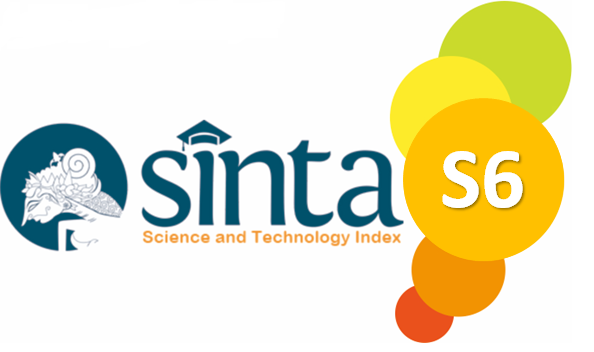Analisis Kualitas Udara Ambien di Area Industri Semen PT X Desa Wajok Hulu Berdasarkan Indeks Standar Pencemar Udara (ISPU)
DOI:
https://doi.org/10.33557/bg5cgk04Keywords:
Ambient Air Quality, Air Pollutant Standard Index , Cement IndustryAbstract
The cement industry plays a significant role in contributing to air pollution, primarily due to combustion and raw material processing that release particulate matter and gaseous pollutants. This research aims to evaluate the ambient air quality around the PT X cement plant in Wajok Hulu Village, Mempawah Regency, and to assess the air pollution level based on the Air Pollutant Standard Index (ISPU) in accordance with Regulation of the Minister of Environment and Forestry No. 14 of 2020. Measurements were conducted at two sampling points, production area and entrance area, with parameters including PM₁₀, PM₂.₅, SO₂, NO₂, CO, O₃, and HC. Air samples were collected using a High Volume Air Sampler (HVAS) and impinger for 24 hours, and the results were compared with the National Ambient Air Quality Standards as stipulated in Government Regulation No. 22 of 2021. The findings indicate that all parameters were below the permissible limits, with ISPU values under 50, categorized as “Good” air quality. The highest ISPU values were recorded for SO₂ and particulate matter (PM₁₀ and PM₂.₅), which are typical emissions from fuel combustion and cement raw material processing. These results suggest that the emission control systems at PT X are operating effectively; however, regular monitoring is necessary to maintain air quality stability. The study emphasizes the importance of implementing emission control technologies such as dust collectors, electrostatic precipitators, and green buffer zones around the plant area as mitigation strategies toward sustainable cement industry practices.
References
[1] R. N. Sari, W. Astuti, and L. Suminar, “Dampak Industri PT . Semen Indonesia Pabrik Tuban terhadap Kondisi Permukiman di Sekitarnya,” J. Perenc. Wilayah, Kota Dan Permukim., vol. 7, no. 1, pp. 149–161, 2025.
[2] F. U. Nwogu, E. A. Ubuoh, C. Kanu, E. E. Ogbaji, and N. Nwawuike, “Effect of cement production processes on dry atmospheric chemistry in South-South Nigeria,” Environ. Sci. Eur., vol. 37, no. 90, pp. 1–23, 2025, doi: 10.1186/s12302-025-01135-4.
[3] C. . Sudhakar and U. G. Reddy, “Impacts of cement industry air pollutants on the environment and satellite data applications for air quality monitoring and management,” Environ. Monit. Assess., vol. 195, no. 7, pp. 1–16, 2023, doi: 10.1007/s10661-023-11408-1.
[4] A. Bărbulescu and K. Hosen, “Cement Industry Pollution and Its Impact on the Environment and Population Health: A Review,” Toxics, vol. 13, no. 7, pp. 1–24, 2025, doi: 10.3390/toxics13070587.
[5] A. N. Khalizah, M. Apriani, and A. E. Afiuddin, “Life Cycle Assessment Emisi ke Udara pada Proses Pembakaran di Kiln PT. Semen Indonesia ( Persero ) Tbk . Pabrik Tuban,” in National Conference Proceeding on Waste Treatment Technology Program, 2015, pp. 137–142.
[6] M. I. I. Akbar, “Analisis Indeks Standar Pencemaran Udara (ISPU) Parameter CO di Jalan AP. Pettarani Makassar Tahun 2021,” Universitas Islam Negeri Alauddin Makassar, 2022.
[7] Peraturan Pemerintah Republik Indonesia Nomor 22 Tahun 2021, Lampiran VII PP RI Nomor 22 Tahun 2021, no. 1. 2021, pp. 1–5.
[8] Peraturan Menteri Lingkungan Hidup dan Kehutanan Nomor 14 Tahun 2020, Permen LHK Nomor 14 Tahun 2020. 2020, pp. 1–16.
[9] D. Safitri, M. M. Muzaki, and S. Safaruddin, “Observasi Sifat, Kandungan Kimia & Kadar Debu Di Pt. Semen Baturaja,” J. Multidisipliner Bharasumba, vol. 1, no. 03, pp. 445–461, 2022, doi: 10.62668/bharasumba.v1i04.296.
[10] S. S. Mehraj and G. A. Bhat, Cement Factories , Air Pollution and Consequences. New York: Marsland Press, 2013.
Downloads
Published
Issue
Section
License

Jurnal Tekno by journal.binadarma.ac.id/index.php/jurnaltekno is licensed under a Creative Commons Attribution-ShareAlike 4.0 International License.









